On June 8, 2022, UNESCO and the UN Decade of Ocean Science for Sustainable Development announced the endorsement of 63 new actions and projects. Six of those projects will join the Marine Life 2030 program. They are:
1. The Cozumel Coral Conservatory
Lead Institution: Living Sea Sculpture
Lead Contacts: Colleen Flanigan
The Cozumel Coral Conservatory (CozCC) is a unique place to preserve and grow corals uniting science, technology, engineering, arts, and math (STEAM). A diverse coalition of all ages, including nonprofits, universities, individuals, private entities, and governmental institutions, are working to protect, monitor, and rehabilitate the Mesoamerican Barrier Reef in Cozumel, Mexico. The CozCC aims to increase coral coverage, marine biodiversity, and shore protection in the Villa Blanca Reef tract through recognized best practices and groundbreaking innovation while offering novel opportunities for ocean engagement, science education and employment made possible through trans-disciplinary collaboration. Natural coral heads, as well as artistic and functional artificial reef structures and sculptures, populate the seafloor in this shallow reef. The CozCC bridges quantitative science and the originality of hands-on creation to scale coral restoration and strive for a balanced, healthy ocean.
2. NE Pacific Coastal Biodiversity Action Network
Lead Institution: Tula Foundation
Lead Contact: Matt Whalen
NEPac-BAN will foster cross-boundary biodiversity science for action-oriented marine conservation and management. The Project will generate a Network of ocean practitioners, including scientists, Crown, and Indigenous decision makers, community members, educators and communicators, to co-design marine life observing for biodiversity science. NEPac-BAN is structured around taxonomic groups (Nodes) and a Synthesis Hub that will tackle cross-cutting themes by integrating across the tree of life to address challenges facing the NE Pacific coastal ocean. The network will co-develop a) Essential Biodiversity and Ocean Variables for the NE Pacific; b) best practices and capacity for biodiversity observations and data management; and c) biodiversity analysis for conservation and restoration actions. These components form an Action Cycle to advance understanding and improve management outcomes by leveraging existing strengths and creating spaces for exchange across the Canada-US border.
3. Somos OceanoS: ocean stories for conservation
Lead Institution: Sea Around Us, University of British Columbia
Lead Contact: Veronica Relano
“Somos OceanoS 2030” (SOS2030) promotes the perspectives of communities on marine management and raises awareness of the ecological, social and economic value of various Marine Protected Areas (MPAs) across the world through accessible science communication.
4. MetaZooGene: Metabarcoding Zooplankton Diversity
Lead Institution: University of Connecticut
Lead Contact: Ann Bucklin
MetaZooGene ML2030 will work toward a global vision for integrative molecular – morphological taxonomic analysis of marine zooplankton biodiversity. The overarching goal is to promote and facilitate DNA barcoding and metabarcoding to characterize local-to-global.
5. Ocean Tracking Network
Lead Institution: Ocean Tracking Network, Dalhousie University
Lead Contacts: Frederick Whoriskey
The OTN global partnership draws on regional networks (e.g., those of S. 12, plus others including the Gulf of Mexico (iTAG) and South America (MigraMar)) and participants from Academia, government, Non-governmental organizations, industry, Indigenous groups, local.
6. MIGRAVIAS: Connecting Marine Protected Areas (MPAs) through ocean swimways to protect migratory routes and critical habitats of endangered species.
Lead Institution: MigraMar
Lead Contact: Rosario Alvarez
The status of many endangered migratory marine species has continued to deteriorate over the last twenty years despite regulatory measures and the creation of marine protected areas. The Swimways Initiative, MIGRAVIAS, aims to reverse these trends by providing tangible protection for species that move along predictable routes and building resilience to climate change. MigraMar will work with national governments to identify and protect at least seven swimways (MigraVias) that link Marine Protected Areas across the Eastern Pacific region. This initiative involves transboundary collaboration in data collection, analysis, management, enforcement, and sustainable and equitable use of the benefits generated.
Marine Life 2030 congratulates these projects on their endorsement and looks forward to working with them to advance the program’s goals!

